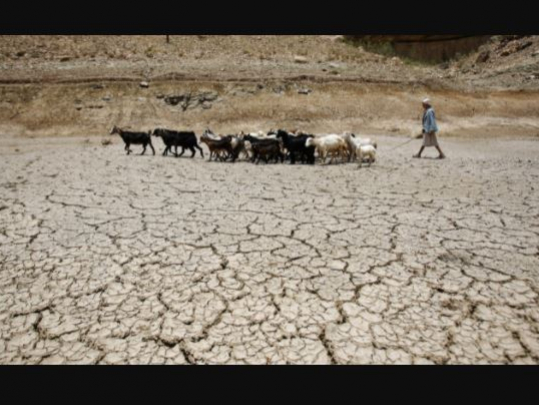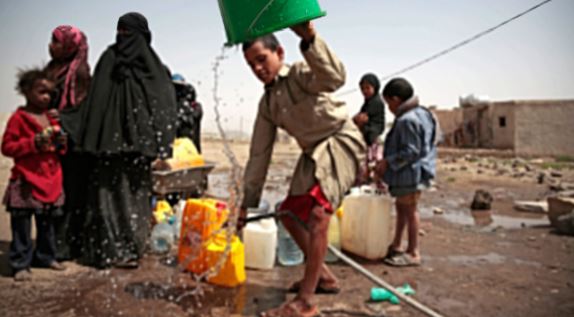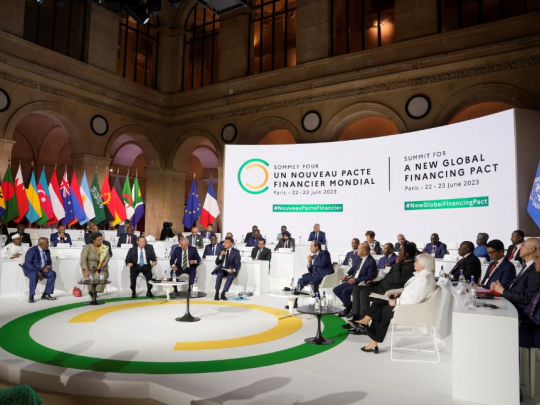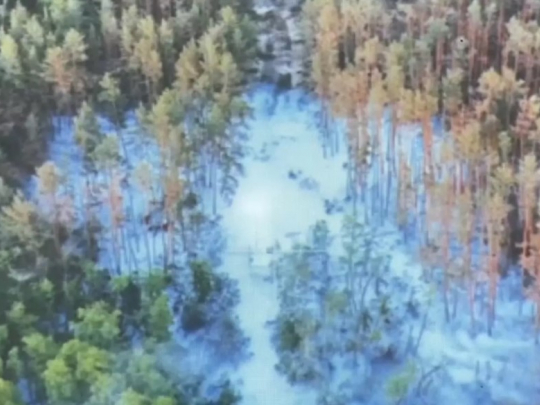Can Saudis/US Use Water Crisis to Bring Yemenis to Their Knees?

When the well ran dry, Abu Yahya al-Hamdani, who provides water to many residents of the Saruf neighborhood in northeastern Sana`a, had no warning. Last week, the water table dipped lower in his water well and the pump began to suck air. For the families in the neighborhood, to whom the danger of water shortage suddenly became visible, the specter of dying of thirst is closer than ever.
“Suddenly access to water is no longer possible. Really, the fear of dying of thirst was the first thing that came to my mind,” Jubran, a father of six, said. Despite the high price, Jubran used to buy water from the al-Hamdani water station that was delivered by truck. Now, he is struggling to find water from another water station, as the al-Hamdani’s station is among many that have recently run dry in the Sana`a Basin.
This year, dozens of water wells in Sana`a Basin have already dried up, leaving thousands of people to drink and wash from polluted water sources like ponds and dams or struggle to buy water at exorbitant prices. Many families have no choice but to send their children to far away places with plastic containers, under the rays of the scorching sun, to fetch clean water that will barely cover their needs for just a day.
The Sana`a Basin is the primary water source for more than 4 million people living in the capital and surrounding areas. It is located in the central Yemen highlands and covers around 3,200 square kilometers. It contains populated districts including Bani Hushaish, Hamdan, Sanhan, Bani Bahlool, Arhab, Nimh, Bani al-Harith, and some parts of Khawlan al-Tial and Bani Matar, as well as Sana`a itself.
Since the 1980s, fewer than 8,000 of the 13,425 wells drilled in the basin have been productive, according to a report to the Yemeni Ministry of Water and Environment. Well-drilling activity is ongoing and in many places wells are being re-excavated many times to a depth of 100 meters. The annual consumption of the basin’s water reaches 400 million cubic meters, compared to the small amount renewed annually in the basin, which amounts to only 20 to 45 million cubic meters — meaning that the drying up of the Sana`a Basin is only a matter of time.
In general, Yemen’s total renewable water resource amounts to 2.5 billion cubic meters per year, while the total demand is estimated to be 4 billion cubic meters per year, with 1.5 billion cubic meters per year being supplied from deep aquifers. Groundwater aquifers decline seven to eight meters each year, with very rare recharge.
Time running out
War-torn Yemen is located in a dry and semi-arid region with the highest rate of exhaustion of water sources in the Middle East. It was already facing a severe water crisis in which both nature and the Saudi-led Coalition are squeezing people. More than 90% of the population struggles daily to find or buy enough clean water to drink or to grow food. In Sana`a, where more than 4 million live and host hundreds of thousands of internally displaced people, it is even worse. The city is the only capital city in the world that may run out of water within a decade at a maximum, according to both the Yemeni Ministry of Water and the United States.
Dr. Fahmy Ali Saeed, a Yemeni hydrogeologist who taught at the University of Sana`a, fears that the Sana`a Basin will exhaust its groundwater in the foreseeable future. “Five years from now, the water in the Sana`a Basin will dry up if the war, siege and current practices in the basin continue,” Dr. Saeed said. Environmental scientist Rashad Al-Habari agrees that time is running out: “The available groundwater reserves in all basins are approximately [20] billion cubic meters. According to the current rate of consumption, Yemen will drain about 12.02 billion cubic meters [annually] until the year 2025, meaning that the stock will be sufficient for only a few years.”
Though there were heavy rains in Sana`a Basin two years ago, there is insufficient drainage and reservoir capacity to cope with such downpours. International projects aimed at alleviating some of the country’s water problems, like the Dutch project to run the Sana`a Basin, have been abandoned and building desalination plants is out of the question because of the high cost and the bankruptcy of the country as a result of the war.
No water means no food
In Hasabah area — in Sana`a near to the famous corridor, known as al-Saayilah — Om Hani, holding a water jerry-can, is sitting next to a water point where people gather to wait for trucks under the rays of the scorching sun. “We are thirsty. I have no water to drink or cook for my children. We are left alone to face this fate, al Hamd to Allah,” she said. The mother of seven was one of the beneficiaries of a water tank funded by UNICEF, or what is known locally as Sabil Water, which serves many neighborhoods inside Sana`a.
In one of the most water-scarce countries in the world, Yemen’s water crisis affects millions of people a day; the people are thirsty and hungry. Much of the land is dried up and poverty is everywhere, amidst a deadly blockade supported by the Biden administration. Without water, not only are people thirsty but also crops cannot grow. And without crops, there is no food, making it difficult for Yemenis to afford both catastrophes at once.
Only a tiny number of families who live in major cities like Sana`a are connected to the supply of state-run water. Even in these cities, only 30%-40% of the houses are connected and they’re lucky if water comes out of their taps just once in 10 days and for only two hours. Moreover, the pipe network is old and an estimated 40% of the water they carry is lost through leaks. Even worse, more than 70% of Yemenis live in rural areas and depend on stagnant or commercial water, and most of the time their only source for drinking and cooking is uncovered dams.
In fact, the nation’s network of water pipes reaches only 30% of the population and is damaged from Saudi bombing and fighting on the ground between Saudi mercenaries and resistance forces, which has left it in need of upgrading and maintenance in many places. With Saudi Arabia preventing access to storage tanks, pipes, valves, and hydrants, more than 15 million people resort to expensive and time-consuming ways to find enough water every day.
A boy rinses a bucket as he collects water from a well contaminated with cholera on the outskirts of Sanaa. Hani Mohammed | AP
Aid organizations pressured to pull out
Today, the truck did not arrive. The mother came back home with an empty jerry-can, not because there was no fuel for the truck, as usual, but this time because the truck company had its financing halted by the international organization that kept it afloat, according to what the driver told customers over the phone. Climate change, weak law enforcement, and a rapidly growing population are not the only problems that stress Yemeni residents in a country with such limited water resources.
The Saudi-led Coalition has imposed a blockade on the country and has prevented the entry of fuel, and thus a number of pumps have been stopped and the costs of transporting water have increased. Fundamentally, Yemen suffers from water scarcity and relies on groundwater, which in turn needs equipment that is not always available in Yemen and needs to be imported from abroad. Also, most of the projects supported by international organizations have stopped in response to strong pressures that have been exerted by both Washington and Riyadh to compel the locals to accept the Saudi version of peace.
The Ministry of Water and Environment in Sana`a has warned that the blockade may lead to complete paralysis of government water services. Deputy Water Minister Hussein al-Darib stated.that “the lack of fuel leads to a sharp decline in the level of water services,” and added that “water supplies are currently classified in the category of ‘severe need’ with the percentage of beneficiaries having decreased to 30%.”
Ahmed Mudaher, the official for water distribution in Sana`a, said that the main pumping station for water in Sana`a is currently operating only 60 out of 330 wells due to the blockade, adding that “the unsafe withdrawal of the organizations financing the operations of the main pumping station in the Municipality exacerbated the decline in the level of service.” Yemen has many years of experience with water conservation, but the Saudi-led Coalition war has made it impossible for the locals to regulate water use in war-affected areas.
Geography, climate, geopolitics and war come together
In Yemen’s complex humanitarian crisis, water scarcity, climate change impacts, and Saudi bombing of water facilities are interlinked. Saudi forces, under the eyes of successive U.S. administrations, use water as a weapon to bring civilians to their knees. The oil-rich kingdom not only prevents the arrival of aid that carries clean water supplies but also targets dams, wells, reservoirs, water structures and infrastructure including networks, diversion dams, and irrigation systems. That has led to acute water shortages for both drinking and irrigation.
There are no rivers in Yemen, as in some other countries, so the major form of water reserves has historically been from rainwater and building weirs and bunds. But many dams have been damaged or need to be repaired. Saudi attacks have destroyed 1488 water installations (dams, barriers, reservoirs) completely and 488 water installations partially, according to a report on Yemeni water bodies. Sana`a’s central water tanks, which cost $4 million to build and were located in Nahdian district in southern Sana`a, were destroyed by U.S bombs dropped by Saudi warplanes. Saudi bombing also destroyed the seawater desalination plant on Kamaran Island in Hodeidah.
According to a regional representative of the UN’s Food and Agriculture Organization (FAO), the war has left around 20 million Yemenis without access to drinking water. “With the current conflict, the number of people who don’t have access to clean water is believed to be more than 80% of the population,” said Abdessalam Ould Ahmed, who represents the FAO’s Near East and North Africa region. Yemen has the highest water scarcity in the world, he said, with more than half the population lacking a regular supply of drinking water even before the fighting began.
Lack of access to clean water is notorious for being the biggest cause of malnutrition, morbidity and mortality in Yemen. Many deadly diseases associated with water shortage, such as cholera, have emerged in many areas throughout the country, including Sana`a. Today, according to observers, there are some diseases that are widespread among the residents of the Sana`a Basin — such as cancer, typhoid, and dysentery — due to forbidden weapons that had been used by the Saudis, in addition to diseases of the liver, kidney and urinary tract caused by a high concentration of salts in the basin water.
- Source : Ahmed Abdulkareem



















